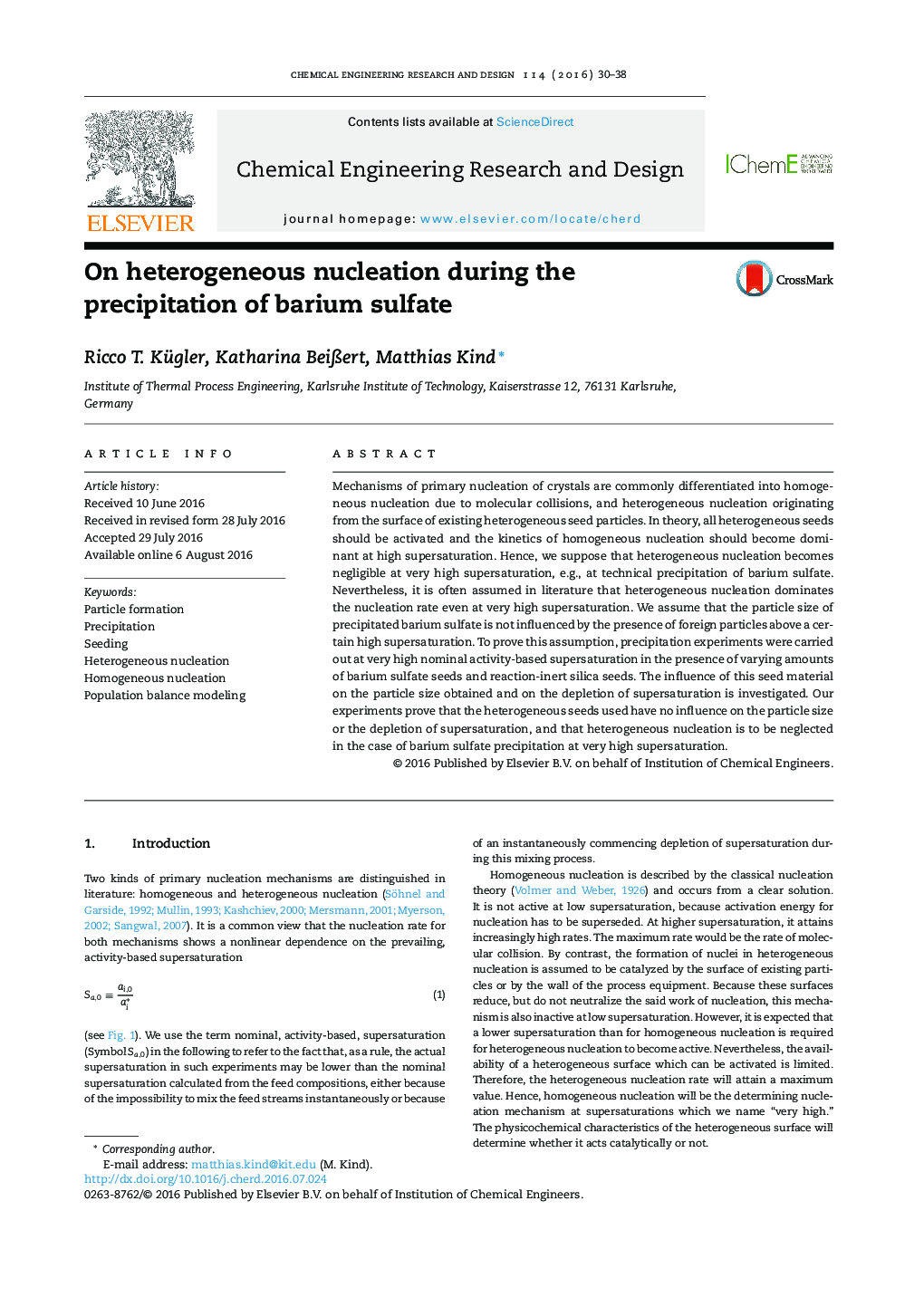| Article ID | Journal | Published Year | Pages | File Type |
|---|---|---|---|---|
| 4987478 | Chemical Engineering Research and Design | 2016 | 9 Pages |
Abstract
Mechanisms of primary nucleation of crystals are commonly differentiated into homogeneous nucleation due to molecular collisions, and heterogeneous nucleation originating from the surface of existing heterogeneous seed particles. In theory, all heterogeneous seeds should be activated and the kinetics of homogeneous nucleation should become dominant at high supersaturation. Hence, we suppose that heterogeneous nucleation becomes negligible at very high supersaturation, e.g., at technical precipitation of barium sulfate. Nevertheless, it is often assumed in literature that heterogeneous nucleation dominates the nucleation rate even at very high supersaturation. We assume that the particle size of precipitated barium sulfate is not influenced by the presence of foreign particles above a certain high supersaturation. To prove this assumption, precipitation experiments were carried out at very high nominal activity-based supersaturation in the presence of varying amounts of barium sulfate seeds and reaction-inert silica seeds. The influence of this seed material on the particle size obtained and on the depletion of supersaturation is investigated. Our experiments prove that the heterogeneous seeds used have no influence on the particle size or the depletion of supersaturation, and that heterogeneous nucleation is to be neglected in the case of barium sulfate precipitation at very high supersaturation.
Keywords
Related Topics
Physical Sciences and Engineering
Chemical Engineering
Filtration and Separation
Authors
Ricco T. Kügler, Katharina BeiÃert, Matthias Kind,
